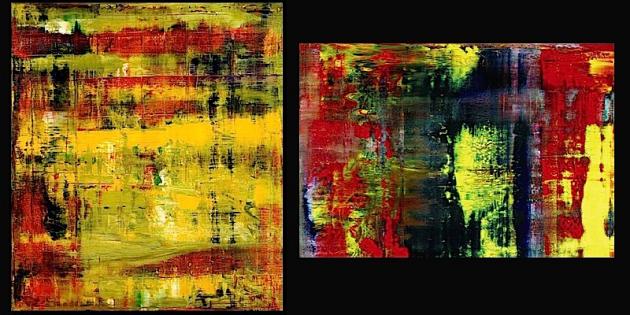A second abstract painting by the German artist Gerhard Richter, owned by the ageing rock star Eric Clapton will go under the hammer at Christie’s auctioneers this autumn. Last year, ‘Abstraktes Bild (809-4)’ was sold to an anonymous buyer for £21,321,250, setting a record price for any living artist. Clapton purchased three major works by Richter in 2001 for around £2m. It is thought the painting will carry an estimate of £20m-£25m.
“Richter is certainly the greatest abstract painter working today,” Brett Gorvy, Chairman and International Head of Post-War and Contemporary Art at Chritie’s, explained in a statement. “Abstraktes Bild” (809-1)’ is remarkable for the illusion of space that develops, ironically, out of his incidental process. It has the sense of a full fall abstract landscape.” It is surprising that after Sotheby’s success with the sale of ‘Abstraktes Bild (809-4)” that Clapton would jump loyalties and move to Christie’s. It raises questions about what goes on behind the scenes of the worlds largest auction houses.
The Sotheby’s auction took five minutes to sell in London to the astonishment of the room. The 1994 abstract oil on canvas from the guitarist’s collection was estimated to sell for between £9 million to £12 million, but overtook the artist’s previous record in excess of £8 million. The previous record for Gerhard Richter was established in New York in May was £13 million.
Born in Dresdon in 1932, Gerhard Richter moved to West Germany from the East before the erection of the Berlin Wall. Settling in Dusseldorf, he had had the ‘Socialist Realist’ modes of his early education challenged by exposure to Fluxus’ anti-formalist ethos, and ‘Pop’ works by the likes of Lichtenstein and Warhol. In the 1960s, Richter had begun to use photographs as ready-made objects – often working from family snapshots but also appropriating media images –, creating realist ‘photo-paintings’ that simulated photography, but also converted the photographic into the painterly, the real into the hyper-real. Existing at the threshold of painting and photography, these works questioned the status of both media, examining the loss of painting’s public function in the light of photography’s usurpation of the recording process.
Richter was notable for being one of the first German artists to reflect on their then-recent national history, explicitly addressing National Socialism by painting the portraits of both those who had been members as well as victims of the Nazi party. Richter’s practice, however, is perhaps most remarkable for its diversity. Simultaneous to his realist photo works, he produced abstract paintings that were concerned (in his own words) with the ‘transcendental’ or ‘inexplicable’. And ultimately’. Last year Tate Modern mounted Panorama a retrospective of the artist’s work. It was an exciting prospect to see the full extent of this artist’s innovative exploration of painting since the 1960s i.
Photo: (Left)Gerhard Richter (b. 1932), Abstraktes Bild (809-1), oil on canvas, 88 ½ x 78 ¾ in. (224.8 x 200 cm.), painted in 1994, Estimate: $20,000,000-25,000,000. Photo: (Right) ‘Abstraktes Bild (809-4)’ was sold to an anonymous buyer for £21,321,250 at Sotheby’s October 2012

